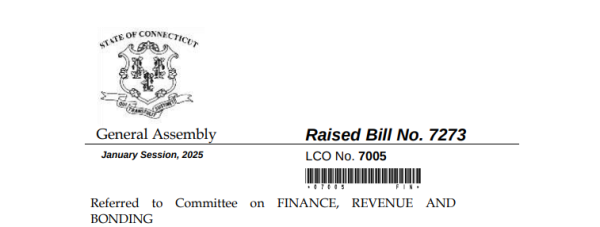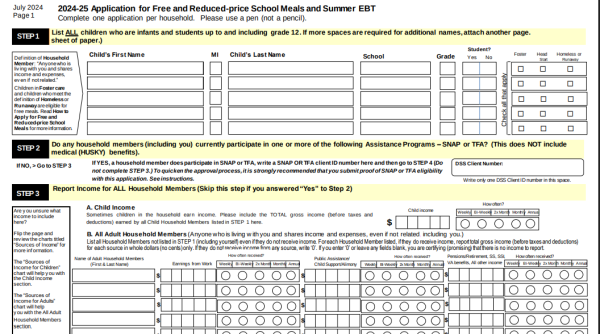
School lunches might be changing next year if state representatives Laurie Sweet, Gary Turco, and Sarah Keitt get their way. Together, they have proposed Bill 7273 in January 2025, providing food, no matter their income level, to all students. The Finance, Revenue, and Bonding Committee held a public hearing for this bill. If passed, it will start on October 1, 2025.
To most students, lunch is one of the few breaks they get, and many students enjoy getting the school lunch. Many students are grateful that there is a program offered here at Morgan that allows them to eat without worrying about money, but some just barely qualify for the program, leaving them to find other means to pay for lunch.

To meet the requirements for free or reduced meals, your legal guardians or guardian have to receive a certain income in their household. The federal guidelines may vary depending on the household’s income and size. It then figures out the amount one gets paid, whether it be every other week, once a month, or annually. Those who meet the requirements can get one lunch and breakfast for free.
This free or reduced meals program was first started in 1946 under the Richard B. Russell National School Lunch Act. During this time, President Harry S. Truman signed off on it. The program was made due to the malnutrition of children. After World War II, it was taken into account that many recruits were rejected due to malnutrition. They wanted to help those going hungry, and with this, it could help other issues within the country.
However, there are students at Morgan who, although they might not meet the requirement, would benefit from a free lunch.
Jon Siciliano is the Food Service Director at Clinton Public Schools and has been working for 15 years to put meals on tables, but is limited by regulations. Some parents of students who did not meet the requirements file complaints. They feel their children should receive the free meals. “It all comes down to the guidelines of income, so there’s nothing I can do,” Siciliano explained. “Occasionally, I will get a letter from a parent who didn’t qualify, and they’ll state their case about something that’s going on in their life, and unfortunately, there is nothing I can do. It goes by income levels only.”
An example of someone who meets the requirements is sophomore Joao Domingos, who has a single mother and meets the requirements of the certain income level for the program. Because of this, he gets free breakfast and lunch every day. This program is a big help to his family. He is very grateful that Morgan offers a program for people who need it. Domingos stated, “The program allows me to have the ability to eat meals without any stress about money.”
Free meals were offered to all students during the years of COVID-19 because of a COVID-19 relief package that Congress passed in 2020 as part of the Coronavirus Aid, Relief, and Economic Security Act, where it was given $189 billion. The reason that the meals are no longer free is due to the fact that the final rounds of funding were set to end back in September of 2024.
Siciliano sees hope for the future, “I believe the Connecticut state government is trying to institute some kind of plan where they can bring back free meals for all students. There’s talk about putting a 1 or 2 percent tax on sugary beverages like a bottle of Coke. That money will go to a fund for free meals in the state of Connecticut.”
Until then, Morgan will continue with the current program, and for some students, that is okay. Jack Henry Palazzo, who is a sophomore, said, “school meals should not be free due to budgetary constraints preventing that, and knowing the money is needed for the costs of food and everything, but I think that it’s great that there is a program for free meals for people who need it.”
The money that students pay for lunch or breakfast is crucial to funding the costs of the school services program. Not all the expenses come out of the Board of Education budget, instead, they come from the students. The money that is made from students is then used to pay the employees and for food and supplies, which costs $345,587. These are the biggest expenses. All the money that the school food services receive goes back into their program and expenses.
Although the bill is currently being discussed on the state level, Sicilliano said he hopes that “free meals will return for all down the road.”



